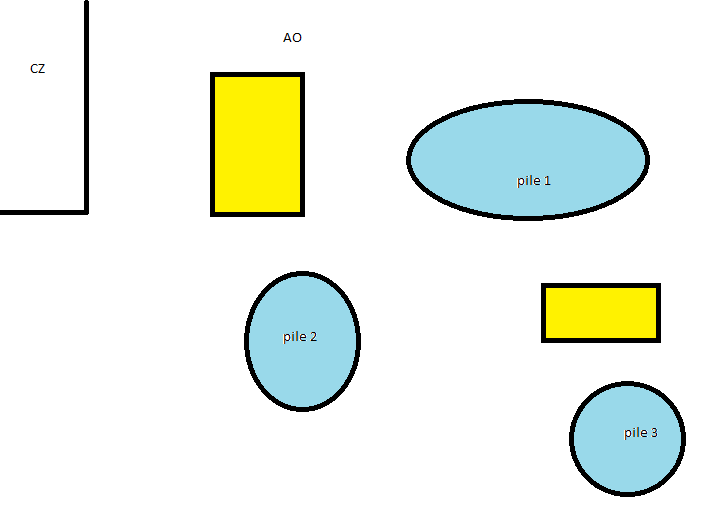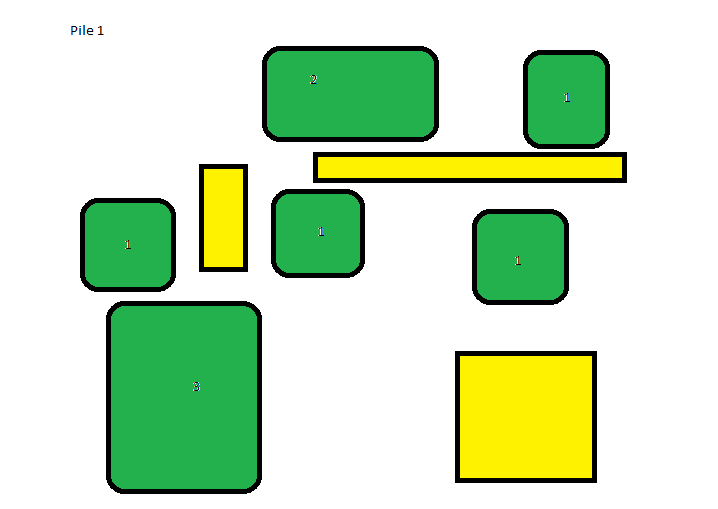Final scenario: Difference between revisions
No edit summary |
No edit summary |
||
| Line 10: | Line 10: | ||
*The yellow shapes indicate obstacles which can't be moved, and therefore have to be evaded. | *The yellow shapes indicate obstacles which can't be moved, and therefore have to be evaded. | ||
*The blue shapes indicate the piles (groups) of material | *The blue shapes indicate the piles (groups) of material | ||
<br> | |||
The reason we want to group the material in "piles" is that in a real rescue scenario, initially not all material will have to be cleared: only material that is blocking the way to victims, or preventing thorough search will need to be cleared. Usually this will mean clearing local concentrations, e.g. physical piles, of material rather than just lose pieces of material. | |||
Back to: [[PRE2015_2_Groep1]] | Back to: [[PRE2015_2_Groep1]] | ||
Revision as of 20:16, 29 November 2015
The final scenario will consist of a controlled environment where the software will be tested. The environement will consist of a square area of operations (AO) bordered by a white line. Inside this AO several sizes and masses of material will be placed in groups. Using the software a number of freeduino based robots will be given the task to clear the AO by moving the materials to a specific part of the AO - the clear zone (CZ). As some materials can not be moved with only one of the robots cooperation is needed, therefore testing the swarm behaviour software. The main idea can be seen in the figures below:

Example overview of the test case with Area of Operation (AO), Clear Zone (CZ) and three piles.

Example of what pile 1 might look like. The numbers in the blocks indicate the number of robots necessary to move the block.
- The green shapes indicate pieces of material, the number inside shows how much robots are needed to move it outside of the box.
- The yellow shapes indicate obstacles which can't be moved, and therefore have to be evaded.
- The blue shapes indicate the piles (groups) of material
The reason we want to group the material in "piles" is that in a real rescue scenario, initially not all material will have to be cleared: only material that is blocking the way to victims, or preventing thorough search will need to be cleared. Usually this will mean clearing local concentrations, e.g. physical piles, of material rather than just lose pieces of material.
Back to: PRE2015_2_Groep1